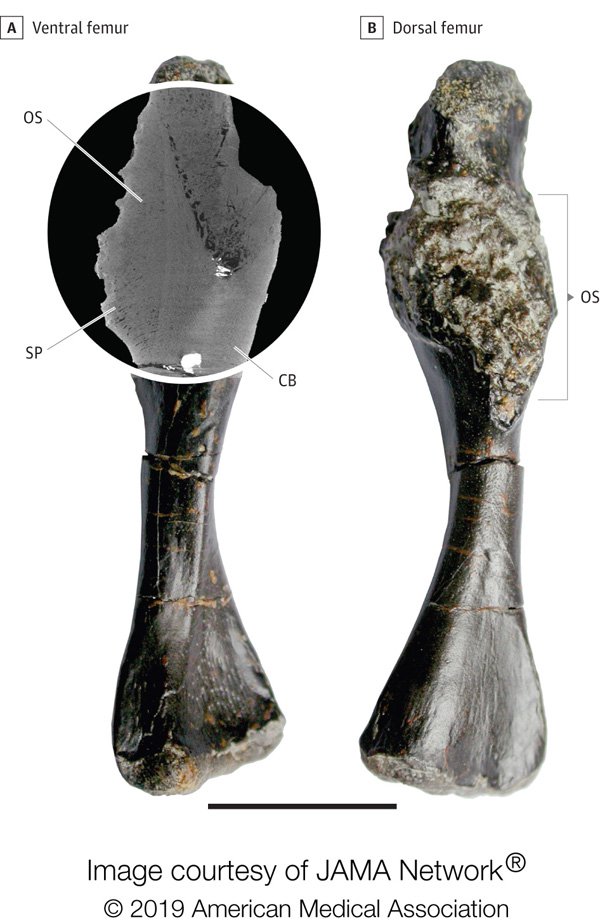Bone cancer found on femur of 240 million-year-old stem-turtle
The fossilized femur of a 240 million-year-old reptile showed evidence of osteosarcoma, according to a research letter published in JAMA Oncology.
“This study provides evidence that unregulated neoplastic cell growth occurred as early as the Triassic period and that cancer is not a modern physiological defect but rather a vulnerability that us rooted deep in the vertebrate evolutionary history,” Yara Haridy, MS, paleontologist and researcher at the Museum für Naturkunde, and colleagues wrote.
The combination of paleopathology and cancer research has found that although some animals are highly susceptible to cancer, others appear to be resistant.
The tumor on the left femur of the shell-less stem-turtle — known as Pappochelys rosinae — is similar to periosteal osteosarcoma in humans.

The specimen was found in southwestern Germany in 2013 and studied at the Museum für Naturkunde in Berlin using micro-CT scans.
Results showed that the most affected area of the femur was on the dorsal side of its proximal half.
The original cortical bone appeared easy to distinguish from the overlying mass in the transverse section.
The original compact bone was not resorbed or disturbed, the medullary cavity was not penetrated, and there were no penetrating lesions, canals or foramina.
A lack of soft tissues prevented histopathological confirmation, which served as a limitation to this study.
“Although a parostotic osteosarcoma has been reported in an Early Triassic amphibian, the periosteal osteosarcoma in a Middle Triassic stem-turtle described herein is, to our knowledge, the oldest instance of bone cancer in an amniote,” Haridy and colleagues wrote. – by John DeRosier
Disclosures: Haridy reports no relevant financial disclosures. One author reports nonfinancial support from Museum für Naturkunde and grants from Deutsche Forschungsgemeinschaft during the conduct of the study.
